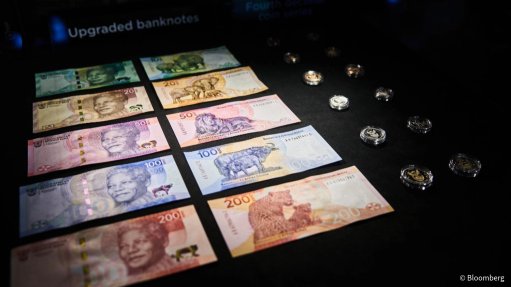Iron-ore demand to slow, while seaborne supply rises
Slower demand growth, especially in China, and a decent recovery in seaborne supply is expected to continue to feature prominently in the iron-ore industry this year, says global energy, chemicals, renewables, metals and mining research and consultancy group Wood Mackenzie (WoodMac).
Prices are expected to fall throughout the year, with the average price forecast at $80/t for this year.
The company this week cited five trends that it expects to impact on the iron-ore industry, adding that, Vale could again “be the biggest swing factor for iron-ore”, albeit in the opposite direction this time.
According to research director Paul Gray, WoodMac forecasts an accelerated recovery in shipments from the first quarter of 2020, which will result in a 30-million-tonne rise in seaborne exports from Vale during the calendar year.
“In other words, half of last year’s losses will be recovered in just one year,” he pointed out.
Looking further ahead, Vale might be able to match its 2018 peak production of 385-million tonnes as soon as 2021, according to Gray, who warned that this would be achieved only if extreme weather conditions and consequent supply chain disruptions are avoided.
“This is to the credit of the rapid repair and recovery programme under way at the company’s key hubs in Minas Gerais.”
Turning to China, WoodMac noted that Chinese iron-ore production had increased by about 30-million tonnes in 2019 in response to strong domestic demand and tight seaborne supply.
For this year, WoodMac forecasts a decent recovery in seaborne supply.
Chinese concentrate production will remain broadly stable in 2020 with no significant displacement occurring until 2021.
Senior manager Ming He said “there is more upside than downside risk to our Chinese iron-ore production forecast for 2020. In [the second half of 2019] we saw how resilient Chinese domestic production (and price) has become [owing to] falling seaborne prices. This trend will likely persist through 2020 as further productivity and efficiency gains are realised.”
He added that the trend towards higher pellet rates in the blast furnace and installation of more efficient pelletising capacity within China “should also support demand for domestic concentrate used as pellet feed”.
The downside risk to production from increasingly stringent safety and environmental protection policies, however, had also diminished after mine operators upgraded equipment and improved the technical efficiency of beneficiation.
Further, WoodMac expects an India supply-side surprise, with Indian imports expected to increase to 12-million tonnes this year.
However, the company warned that, for India to reduce its reliance on expensive imports, it would have to lower its exports by a further ten-million tonnes or domestic production would need to rise by the equivalent tonnage.
WoodMac principal analyst Sandeep Kalia said a key point to watch this year was India’s “ability and willingness to boost domestic production” in response to strong demand and wide spreads between domestic and seaborne pricing.
The mine lease auction process for 18 working mines – with the capacity to produce about 80-million tonnes a year of iron-ore – is scheduled for completion by end-February. The results of this would provide a good indication of potential production shortfalls.
Additionally, WoodMac mentioned that the past two years “have been a roller-coaster ride” for iron-ore grade price spreads and impurity penalties, notably silica and alumina differentials.
“In 2020 [WoodMac] forecasts a modest recovery in the 65/62 spread from an annual average of 12% in 2019 to 14%. However, with steel prices likely to remain under pressure and iron-ore prices currently trading above our forecast, there is risk of further steel margin compression, limiting the scope for higher premiums for high-grade ore,” Gray commented.
He added that WoodMac was also a “firm believer” in the long run trend towards steel mills consuming more high-grade ore at the expense of low-grade ore but warned that this could come at a cost of rising alumina in blast furnace slag.
“Too much alumina increases slag viscosity, significantly reducing blast furnace permeability, which negatively impacts fuel rate and overall productivity. Watch out for rising alumina penalties and falling silica penalties,” Gray warned.
Further, the Chinese-backed consortium SMB-Winning, which is the new owner of the Simandou iron-ore mine, in Guinea, announced last year that the mine had the capacity to produce more than 100-million tonnes of high-grade iron-ore, and is expected to start production in 2025.
According to Gray, a project of this scale in this location “will almost certainly take more than five years to reach fruition”. But more importantly, he said the market would likely struggle to absorb the additional supply and that it would be a challenge for the mine to earn a sufficient return on investment.
“However, key consortium partner China Hongqiao (Weiqiao) Group has significant influence and investments in Guinea. Ultimately, this could come down to a strategic desire for China to reduce reliance on imported iron-ore from Australia and Brazil while increasing captive ownership of iron-ore resources in a country where it already has considerable influence,” he concluded.
Article Enquiry
Email Article
Save Article
Feedback
To advertise email advertising@creamermedia.co.za or click here
Comments
Press Office
Announcements
What's On
Subscribe to improve your user experience...
Option 1 (equivalent of R125 a month):
Receive a weekly copy of Creamer Media's Engineering News & Mining Weekly magazine
(print copy for those in South Africa and e-magazine for those outside of South Africa)
Receive daily email newsletters
Access to full search results
Access archive of magazine back copies
Access to Projects in Progress
Access to ONE Research Report of your choice in PDF format
Option 2 (equivalent of R375 a month):
All benefits from Option 1
PLUS
Access to Creamer Media's Research Channel Africa for ALL Research Reports, in PDF format, on various industrial and mining sectors
including Electricity; Water; Energy Transition; Hydrogen; Roads, Rail and Ports; Coal; Gold; Platinum; Battery Metals; etc.
Already a subscriber?
Forgotten your password?
Receive weekly copy of Creamer Media's Engineering News & Mining Weekly magazine (print copy for those in South Africa and e-magazine for those outside of South Africa)
➕
Recieve daily email newsletters
➕
Access to full search results
➕
Access archive of magazine back copies
➕
Access to Projects in Progress
➕
Access to ONE Research Report of your choice in PDF format
RESEARCH CHANNEL AFRICA
R4500 (equivalent of R375 a month)
SUBSCRIBEAll benefits from Option 1
➕
Access to Creamer Media's Research Channel Africa for ALL Research Reports on various industrial and mining sectors, in PDF format, including on:
Electricity
➕
Water
➕
Energy Transition
➕
Hydrogen
➕
Roads, Rail and Ports
➕
Coal
➕
Gold
➕
Platinum
➕
Battery Metals
➕
etc.
Receive all benefits from Option 1 or Option 2 delivered to numerous people at your company
➕
Multiple User names and Passwords for simultaneous log-ins
➕
Intranet integration access to all in your organisation


















